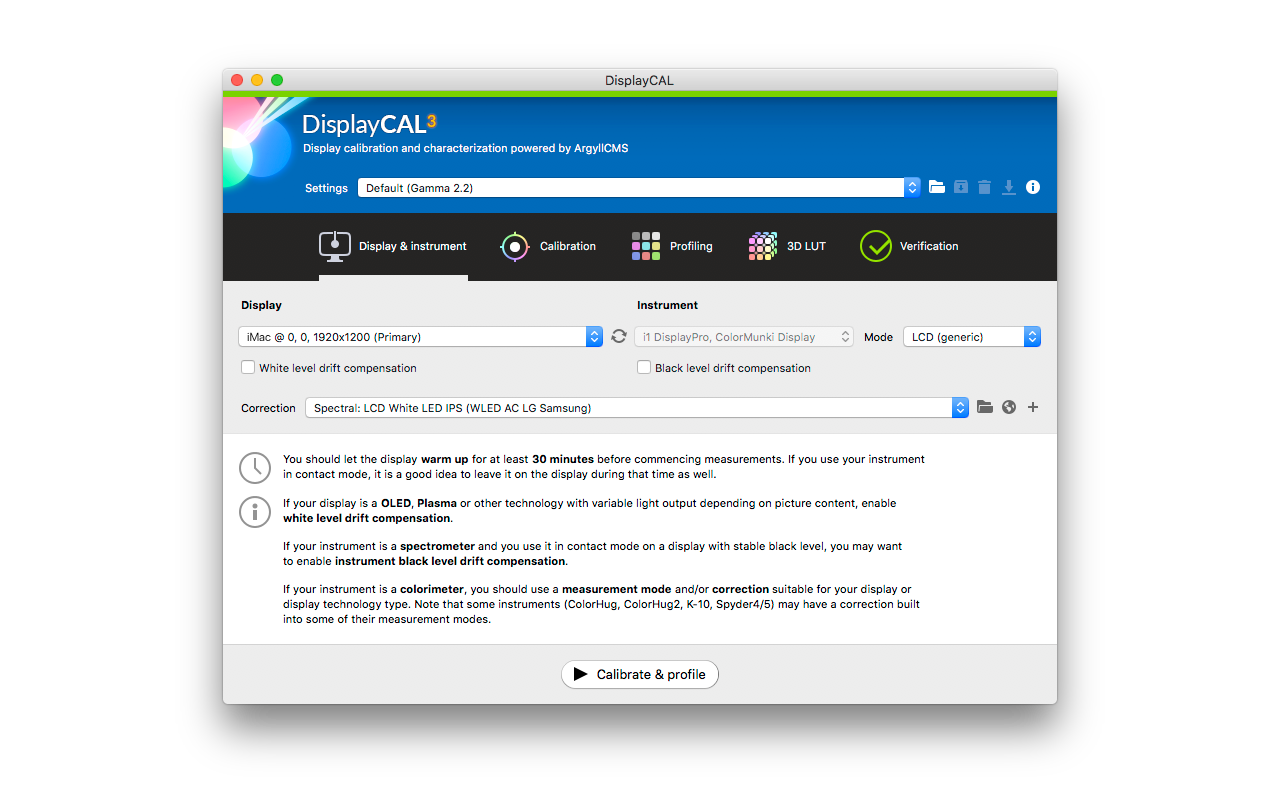

In-home testing has potential benefits in reducing costs, increasing convenience, recruitment of subjects for studies, monitoring of patients, and the ability to collect data frequently. In addition to the use in clinics, there has been a growing trend for remote visual testing using home computers ( Dagnelie, Yang, Bahrami, Stone & Melia, 2003 Dagnelie, Kramer, Seifert, Yang & Havey, 2008), smart phones, tablets ( Dorr, Lesmes, Zhong-Lin & Bex, 2013), and over the Internet ( Lavin, Silverstein & Zhang, 1999 Dagnelie, Zorge & McDonald, 2000).
Displaycal instrument grey software#
Many personal-computer based clinical vision test systems are now marketed either as integrated systems or as software packages to be used with existing computers and displays. Following the development of the basic electronic visual acuity chart many other clinical tests were incorporated into these systems including letter and grating CS in the B-VAT II -SG ( Corwin, Carlson & Berger, 1989) followed by a battery of binocular vision tests ( Waltuck, McKnight & Peli, 1991) that included distance stereoacuity testing ( Rutstein & Corliss, 2000 Wong, Woods & Peli, 2002). TestChart 2000 (Thomson Software Solutions, UK), Metrovision (Metrovision, France), SmartSystem20/20 (M&S Technologies, Skokie, IL) and CST1800 (Stereo Optical Co, Chicago, IL)). Electronic clinical test systems are in widespread use today (e.g. In the clinic, electronic displays have been replacing the paper wall chart and optical projector tests of visual acuity and contrast sensitivity (CS) measurements starting with the 1980s introduction of the B-VAT system (Mentor O&O, Norwood MA) ( Williams, Decker, Kurtzman & Kuether, 1980). Visual psychophysical laboratory studies are usually conducted using electronic displays.
Displaycal instrument grey verification#
Our visual calibration procedure enables clinical, internet and home implementation and calibration verification of electronic contrast testing. Using a photometer we verified that the calibration achieved with this procedure is accurate for both LCD and CRT displays enabling testing of letter contrast sensitivity to 0.5%. Our method combines psychophysical techniques (1) for detection (and thus elimination or reduction) of display saturating nonlinearities (2) for luminance (gamma function) estimation and linearization without use of a photometer and (3) to measure without a photometer the luminance ratios of the display’s three color channels that are used in a bit-stealing procedure to expand the luminance resolution of the display. We developed and evaluated a novel method that uses only psychophysical responses of a person with normal vision to calibrate the luminance contrast of displays for experimental and clinical applications. In the laboratory this is achieved using expensive light meters. Laboratory and clinical measurements of various functions and in particular of (letter) contrast sensitivity require accurately calibrated display contrast.

Electronic displays and computer systems offer numerous advantages for clinical vision testing.


 0 kommentar(er)
0 kommentar(er)
